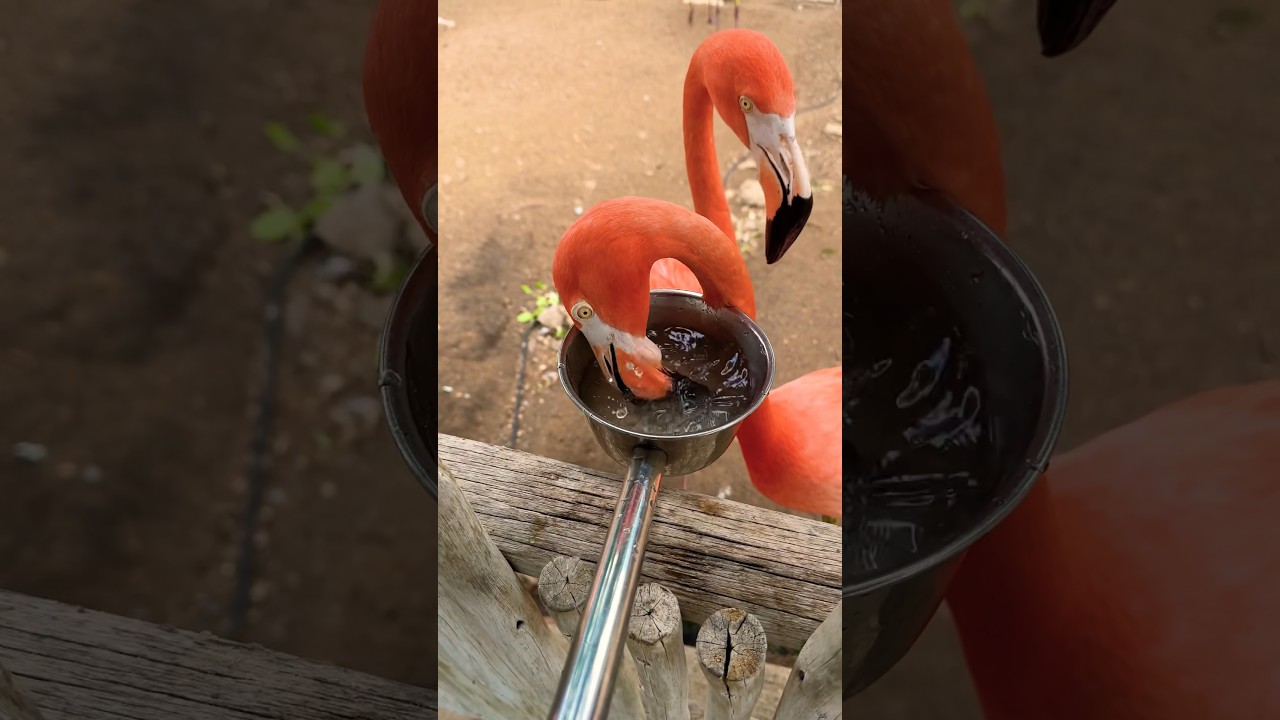- The intricate diet and feeding behaviors of flamingos spotlight Calypso’s shrimp feast.
- Insights into flamingo biology and the significance of their vibrant plumage.
- The role of zoos in wildlife conservation and educational outreach is illustrated through Calypso’s story.
- Challenges in flamingo conservation and the steps being taken to protect these birds in the wild.
Flamingos, with their distinct pink feathers and stilt-like legs, are among the most recognizable birds on the planet. Calypso the flamingo’s readiness to feast on shrimp offers an engaging glimpse into the dietary preferences that play a crucial role in maintaining their eye-catching appearance. This article examines the dietary habits of flamingos, delves into the biology behind their colorful plumage, explores the conservation efforts of zoos, and outlines the challenges facing flamingo populations worldwide.
Flamingos are filter feeders, relying on their uniquely structured beaks to sieve food items out of the water. A flamingo’s diet primarily consists of algae, crustaceans, and small aquatic organisms, with brine shrimp being a favorite. The act of feeding is fascinating; flamingos dip their beaks upside down into the water and employ a sucking, filter-like technique to ingest their food while simultaneously expelling water. Calypso’s enthusiasm for shrimp is more than just a preference; the carotenoids present in these crustaceans are metabolized by the flamingo, leading to the development of their vibrant plumage.
The iconic pink feathers of flamingos are directly linked to their diet. The pigments responsible for this coloring, carotenoids, are found in the algae and crustaceans flamingos consume. Once ingested, these pigments dissolve in fats and are deposited across the flamingos’ feathers, beak, and legs, giving them their distinctive color. This process underscores the critical importance of a rich, carotenoid-laden diet for the health and appearance of these birds.
Zoos play a pivotal role in the conservation of flamingos by providing safe habitats, conducting research, and engaging in breeding programs. Through the story of Calypso, we can explore how modern zoological parks contribute to our understanding and preservation of flamingo species. Often inspired by charismatic individuals like Calypso, educational programs inform the public about flamingos’ natural behaviors, diets, and habitats, fostering a deeper appreciation and respect for these animals. Furthermore, zoos participate in crucial conservation initiatives, working to protect natural flamingo habitats and supporting population recovery efforts.
Despite their popularity, flamingos face several challenges in the wild, including habitat loss, pollution, and climate change. The degradation of wetlands, essential for feeding and breeding, poses a significant threat to flamingo populations. Conservation efforts are therefore geared towards habitat restoration and protection, ensuring that flamingos have access to crucial feeding and nesting sites. Additionally, research on flamingo health and behavior aids in developing strategies to mitigate the impacts of environmental threats.
Calypso the flamingo is more than just a subject of fascination; her story offers a window into the complex interplay between diet, biology, and conservation in the life of one of nature’s most striking creatures. As we follow Calypso’s readiness to feast, we are reminded of the importance of understanding and protecting the delicate balance of ecosystems that support flamingos and a vast diversity of life. Through targeted conservation efforts and the educational outreach of zoos, there is hope for sustaining flamingo populations and the vibrant spectacle they bring to the natural world.
*****
Source Description


